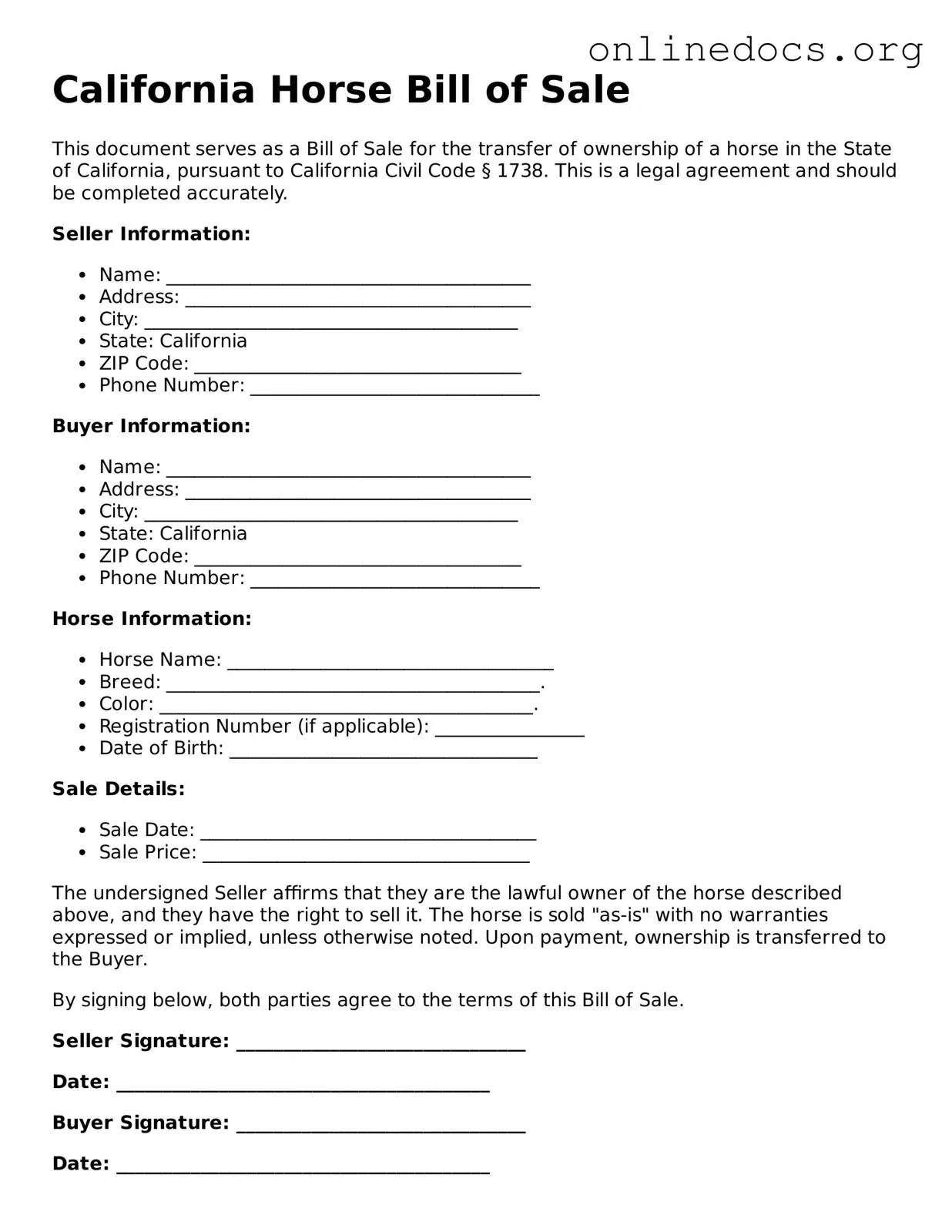When filling out the California Horse Bill of Sale form, many individuals make common mistakes that can lead to complications down the line. One frequent error is failing to provide complete information about the horse being sold. Essential details such as the horse's name, breed, age, and registration number should be clearly stated. Incomplete information can cause confusion and disputes later.
Another mistake is neglecting to include the seller's and buyer's contact information. Both parties should provide their full names, addresses, and phone numbers. This information is crucial for any future communication regarding the horse or the sale.
Many people also overlook the importance of including the sale price. While it might seem obvious, clearly stating the agreed-upon amount helps to avoid misunderstandings. Without this detail, it can be difficult to prove the terms of the sale.
Not signing the form is a common oversight. Both the seller and the buyer must sign the document for it to be legally binding. Without signatures, the transaction may not hold up in court if any disputes arise.
Another error involves not dating the document. The date of the sale is vital for record-keeping and legal purposes. It marks when the ownership transfer occurred, which can be important for various reasons, including liability issues.
Some individuals mistakenly assume that a bill of sale is not necessary for a horse transaction. In California, having a written bill of sale is recommended to protect both parties. It serves as proof of ownership and can be essential for future transactions or registration.
People also often forget to include any warranties or guarantees. If there are specific conditions regarding the horse's health or soundness, these should be clearly noted. This helps to set clear expectations and protects both the seller and the buyer.
Lastly, failing to keep a copy of the signed bill of sale is a significant mistake. Both parties should retain a copy for their records. This document serves as proof of the transaction and can be helpful if any issues arise in the future.
